Coping with Dementia
Fears, Pharmaceuticals 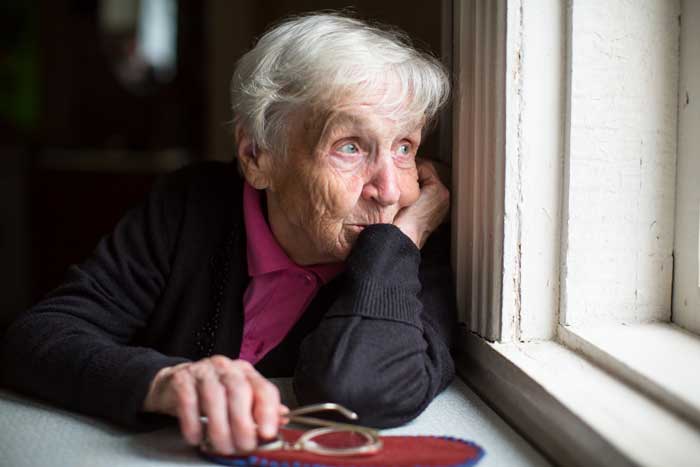
A New Approach 
By Jeanne Roberts
Coping with Dementia: Fears, Pharmaceuticals, and a New Approach
As Gen X adults age and find themselves bracketed by two other need-heavy demographic groups—strong-willed teenagers on the one hand and aging parents on the other—urgency grows to find evidence-based, cost-effective methods for alleviating some of the most troubling symptoms of dementia.
Dementia is common to aging and conditions like Alzheimer's disease, vascular dementia, dementia with Lewy bodies (DLB), Parkinson's disease, frontotemporal dementia, and Huntington's chorea, a progressive movement and cognitive disease. All are ultimately debilitating and almost always eventually require institutionalization or hospitalization.
Alzheimer’s is the most prevalent of these diseases, representing 60 to 80 percent of dementia cases—and loss of memory, wandering, and poor judgment are only a sample of the symptoms with which caregivers will have to deal. If the victim is a well-loved family elder, managing difficult behaviors may cause a lot of suffering, not to mention stress on the entire multigenerational family. Many teens will not have developed empathy skills with which to respond appropriately to difficult behaviors, and those who have may find themselves drawn into depression as they ask themselves, “Is this what I have to look forward to?”
For family caregivers, the one symptom that often can’t be managed is agitation (and its twin, aggression). This agitation can cause even weakened, aging individuals to display surprising strength. The root cause of the agitation is the patient’s recognition of gradually declining memory and his or her loss of a former attachment to the world; the fear this awareness causes can manifest as destruction or even unintentional savagery, because the victims of Alzheimer’s often feel used or abandoned.
What Is Alzheimer’s Disease?
Alzheimer's disease ranks sixth as a primary cause of death in the United States and is the fifth most prominent cause of death among persons over 65. At the age of 70, about two thirds of Alzheimer’s patients can be expected to die within ten years.
In 2013, approximately 5 million Americans aged 65 years or older had Alzheimer's disease. This number could reach 13.8 million people by 2050.
The age group at highest risk for Alzheimer’s, the Baby Boomers, are in fact now coming of age. One in nine has Alzheimer’s. Even more frightening, at a time when people are living far longer, is the statistic that 33 percent of people over 85 have Alzheimer’s. In fact, the Alzheimer’s Association suggests that the risk may nearly double at that age. Sadly, the disease is not a normal part of aging: medical professionals suggest that the American diet and lifestyle may particularly promote the disease’s development.
Caring for Aging Parents with Alzheimer’s
The ideal scenario is caring for a parent with Alzheimer’s at home. Unfortunately, that is not always possible. We have already explored the idea that pharmaceuticals, which can inhibit the dangerous aspects of dementia, are nonetheless a form of abuse, depriving patients of their essential humanity.
Are Drugs the Answer?
While some drugs, like Namenda (memantine), can be used successfully to treat moderate to severe mental turmoil resulting from Alzheimer's disease, they aren’t cures. In fact, Namenda’s operation is simple: it blocks the effects of glutamate in the brain. Glutamate, a powerful neurotransmitter, is essential in learning, memory, awareness, and the ability to function in the day-to-day world.
In excess, however, or in people with a specific brain-chemistry flaw, this beneficial chemical can become an excitotoxin or nerve poison. This is true for both Alzheimer’s and Huntington’s disease.
Antidepressants may be less valuable in treating patients with dementia symptoms. In a very recent study, researchers concluded that—perhaps as a result of too few randomized, controlled trials, or too small an Alzheimer’s population studied—the actual value and potential for antidepressants in mitigating aspects of the disease were largely undetermined, and more studies were required.
The benefits of antipsychotics against excitability, agitation, and aggression are even less notable, especially in the longer term. In fact, these drugs (risperidone, olanzapine, and aripiprazole) are associated with dangerous side effects that can include increased cognitive decline, stroke, and death. The risk increases with duration of use.
Olanzapine (Zyprexa), for example, can cause a potentially irreversible movement disorder called tardive dyskinesia. Aripiprazole (Abilify) is contraindicated among people who have, or have a tendency toward, high cholesterol, high triglycerides, and diabetes, all of which are more common as people age.
What is WHELD?
WHELD (Well-Being and Health for People with Dementia) combines “person-centered care training, person-centered activities, staff training, social interaction, and guidance on the use of antipsychotic medications.”
This particular method of dementia management attempts to outline an effective, simple, and practical regimen to enhance patients’ mental health while simultaneously reducing the need for sedation, which deprives individuals of their personality and quality of life.
The Problem with Pharmaceuticals
One of the most compelling reasons to reduce pharmaceutical use in dementia patients has to do with their ability to recall and report abuse. Abuse is the single most overwhelming fear that adult parents of the institutionalized elderly and infirm face daily: “Is my mother or father being beaten, left to suffer, or perhaps even starving or dehydrated?”
Institutionalization, which occurs at a rate of one in four among Alzheimer’s patients in the first three years after diagnosis, is a heartbreak for family members, especially when a parent dies and the cause of death is discovered to be neglect or abuse at the hands of strangers.
WHELP’s Effectiveness
A 2016 study on WHELP showed that person-centered care offers significant benefits to dementia sufferers and their caregivers. The study evaluated the impact of antipsychotic review, social interaction, and exercise, in conjunction with person-centered care, on antipsychotic use, agitation, and depression in people with dementia living in nursing homes.
The study randomly assigned eight nursing homes to programs implementing one or more of three tactics for managing dementia symptoms: antipsychotic medication review, social-interaction activities, and exercise regimens. After nine months, the nursing homes in the study assessed patients to see where they stood in terms of antipsychotic medication use, agitation, and depression. The study also assessed patients for their overall neuropsychiatric symptoms and mortality (rate of death).
The findings were moderately impressive. Reviewing the use of antipsychotic meds alone—with no other measures implemented—reduced medication use by a whopping 50 percent. Combining antipsychotic review with social-interaction intervention significantly reduced mortality compared with the group receiving neither.
Here’s a kicker: The group receiving antipsychotic review but not the social intervention showed a significantly worse outcome in neuropsychiatric symptoms compared with the group receiving neither. So antipsychotic med review reduced medication use but didn’t help patients with their psychiatric symptoms—social interaction was key to improving patients’ psychiatric condition.
Meanwhile, the exercise intervention significantly improved neuropsychiatric symptoms but not depression. None of the interventions had a significant impact specifically on agitation.
Bottom line: Reductions in antipsychotic use can be achieved by using a "real world" intervention, but social interaction and exercise are necessary to offering any improvement in the quality of life experienced by dementia sufferers. Social interactions such as conversation, listening to music, looking at pictures of grandchildren, and the like clearly matter in dementia symptom management, and it is worthwhile to train caregivers in these activities. Dementia does create real quality-of-life problems—depression, and confusion among them—but social interaction and physical movement can ease these symptoms to at least some degree.
Implementing WHELD: Costs and Benefits
In 2010, the CDC (Centers for Disease Control) estimated the cost for treating Alzheimer’s disease at somewhere between $159 and $215 billion annually. By 2040, these costs are expected to swell to at least $379 billion and perhaps as much as $500 billion annually.
Cost-cutting via WHELD, while small in scope, is framed in a prototype easily implemented in most nursing homes and similar facilities. Given traditional routines and accepted practices in institutions caring for the ill and elderly, however, initiating and sustaining the WHELD model may be difficult. The nursing-home caregivers at the forefront of delivering treatment are often undertrained and overworked.
Looking Forward
There is hope. In many places, notably Minnesota (where a recent Star Tribune article on abuse in area nursing homes highlighted a nationwide problem), dedicated Alzheimer’s care facilities offer solutions that focus on person-centered care training and person-centered activities—both quintessential elements of WHELD.
At the two locations of The Wealshire, north and south of the Twin Cities, a PLST (Progressively Lowered Stress Threshold) form of WHELD aims to elucidate the nature of “stress” for Alzheimer’s dementia patients and alleviate it through staffing structure, programming, and environment.
Until a cure or surefire preventive measures for Alzheimer’s and other forms of dementia are found, managing patients’ symptoms and caregivers’ stressors while honoring patients’ need for quality of life is crucial. Dementia strikes fear into the hearts of both sufferers and those who tend to them precisely because our memories constitute so much of our sense of humanity. WHELD, by balancing person-centered care with education about effective (and less sedating) pharmaceutical intervention, aims to address those fears by educating caregivers about activities that soothe and engage sufferers, appropriate physical care, and the cost–benefit analysis involved in pharmaceutical treatment.
There is no easy road through end-of-life dementia. There remains, however, the possibility for good moments, compassionate care, and person-to-person relationship, whether in the home or in a nursing facility.



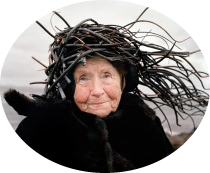



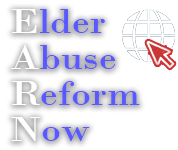




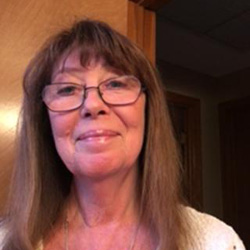











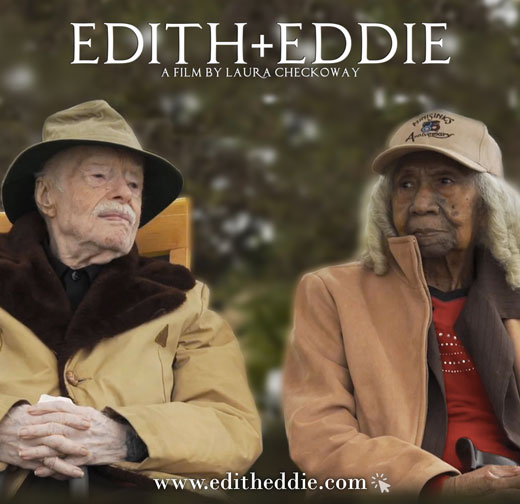
 Checkoway was an entertainment journalist before doing a collaborative autobiography on the rapper Mobb Deep and making her first film, Lucky, a survival story about a homeless, unemployed woman on the streets of New York. Checkoway worked on that film for five years—a measure of her devotion to the responsibilities inherent to the documentary genre. Her cinematic interest in Edith and Eddie was piqued by a compelling online photo of the nonagenarian couple. She said in a telephone interview with the Silver Standard that she was intrigued by the story of a couple “who found love at that time in their lives” (Checkoway herself is in her mid-twenties, remember). Their relationship, she said, “was something really special,” and she found herself wanting to tell their very human story.
Checkoway was an entertainment journalist before doing a collaborative autobiography on the rapper Mobb Deep and making her first film, Lucky, a survival story about a homeless, unemployed woman on the streets of New York. Checkoway worked on that film for five years—a measure of her devotion to the responsibilities inherent to the documentary genre. Her cinematic interest in Edith and Eddie was piqued by a compelling online photo of the nonagenarian couple. She said in a telephone interview with the Silver Standard that she was intrigued by the story of a couple “who found love at that time in their lives” (Checkoway herself is in her mid-twenties, remember). Their relationship, she said, “was something really special,” and she found herself wanting to tell their very human story.
 Could a Technical High School be the More Rewarding Choice for Your Grandchildren?
Could a Technical High School be the More Rewarding Choice for Your Grandchildren? What Is the Current Market for Skilled Laborers?
What Is the Current Market for Skilled Laborers?

 Evolution
Evolution R I D
R I D Aging and ailing.
Aging and ailing.
 Window boxes, eye-catching miniature gardens, were ubiquitous in cities like London and Paris as far back as the 1600s.
Window boxes, eye-catching miniature gardens, were ubiquitous in cities like London and Paris as far back as the 1600s. Coming to America
Coming to America Can you see yourself learning to make an authentic Linzer torte with a professional pastry chef in Austria? Canoeing through Strasbourg’s canals? Horseback riding through Fruška Gora National Park in Serbia? Taking a foodie tour of Rotterdam? Listening to a string and orchestra recital in a historic cathedral in Antwerp? Taking a private tour of Amsterdam’s famous tulip greenhouses? These are just a few of hundreds of different experiences available to passengers who travel by ship along Europe’s Danube, Rhine, and Main rivers.
Can you see yourself learning to make an authentic Linzer torte with a professional pastry chef in Austria? Canoeing through Strasbourg’s canals? Horseback riding through Fruška Gora National Park in Serbia? Taking a foodie tour of Rotterdam? Listening to a string and orchestra recital in a historic cathedral in Antwerp? Taking a private tour of Amsterdam’s famous tulip greenhouses? These are just a few of hundreds of different experiences available to passengers who travel by ship along Europe’s Danube, Rhine, and Main rivers.
 As we have just begun, we have not yet received any letters. I certainly hope that you will write to us: tell us about your experience with Financial Elder Abuse or Involuntary Guardianship. We will also be looking for people to interview for our monthly video and lovely photographs for our cover.
As we have just begun, we have not yet received any letters. I certainly hope that you will write to us: tell us about your experience with Financial Elder Abuse or Involuntary Guardianship. We will also be looking for people to interview for our monthly video and lovely photographs for our cover.